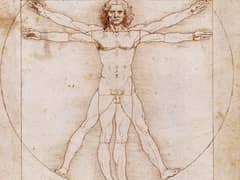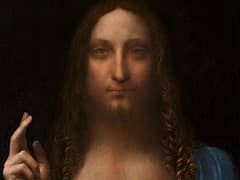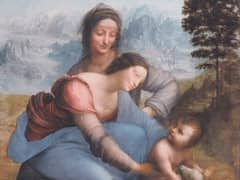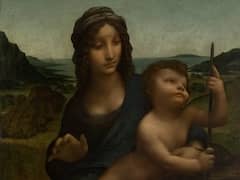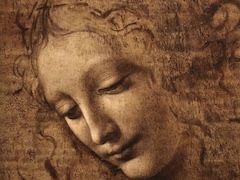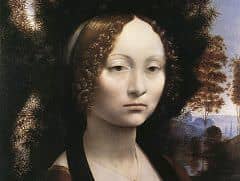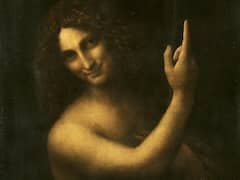Portrait of Ginevra Benci by Leonardo da Vinci
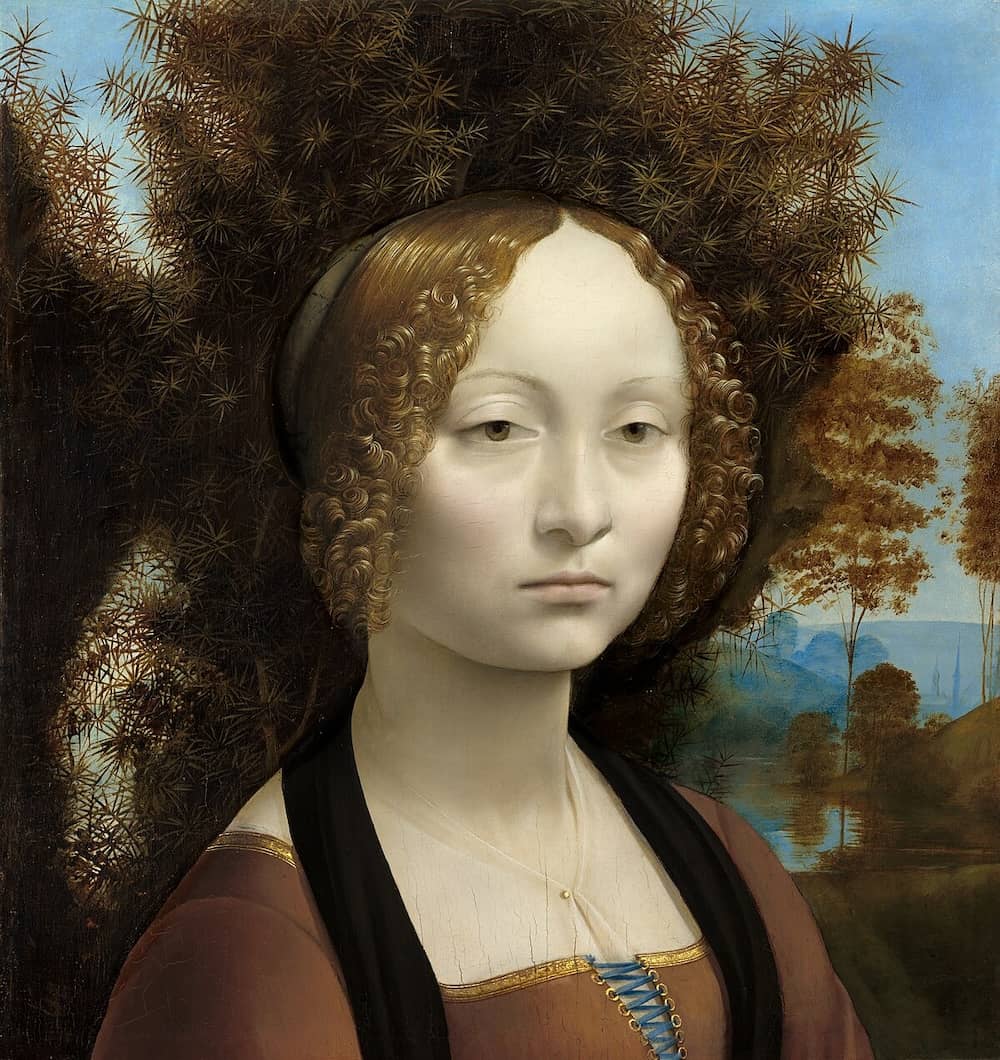
Portrait of Ginevra Benci was painted by Leonardo da Vinci around 1474-1476. It is oil on wood and measures 42 x 37 cm (16 1/2 x 14 1/2 in.) It is now owned by National Gallery of Art, Washington, DC and is currently the only painting by Leonardo in the Americas.
A lady of the aristocratic class in 15th century Florence, Ginevr Benci was admired for her intelligence by Florentine contemporaries. She is the subject of one of only about 17 existing paintings attributed to Leonardo da Vinci.
Unlike Leonardo's other portraits of women, this lady looks sulky, unforgiving, and haughty; this is emphasized by the slightly smaller cast of one eye, making her look withdrawn. Her left eye seems to gaze directly at us while the right looks beyond some invisible point. Like other Florentine women of the period, Ginevra has shaved off her eyebrows (this is also obvious in the Mona Lisa). Maybe her expression indicates she was not entirely happy regarding her forthcoming marriage. In later life she was to go into self-inflicted exile in an attempt to recover from a severe illness; she was also tormented by an ill-fated love affair.
The marble appearance of her complexion - smoothed with Leonardo's own hand - is framed by the undulating ringlets of her hair. This then contrasts beautifully with the halo of spikes from the juniper bush. Leonardo veiled the background of this portrait in a thin veil of mist known as sfumato; this being created with overlaid oil glazes. Though Leonardo did not create this effect he becomes well-known for his skillful use of it.

Fingerprints visible on the painting surface show how the Leonardo used his hand as well as a brush to blend colors and create soft, delicate edges.
At some point this canvas had as much as one-third cut from the bottom (estimates put the amount removed at around nine centimetres). This area would have been large enough to show her hands, folded or crossed, and resting in her lap. Their loss is a great shame as no one painted hands as beautifully as Leonardo.



